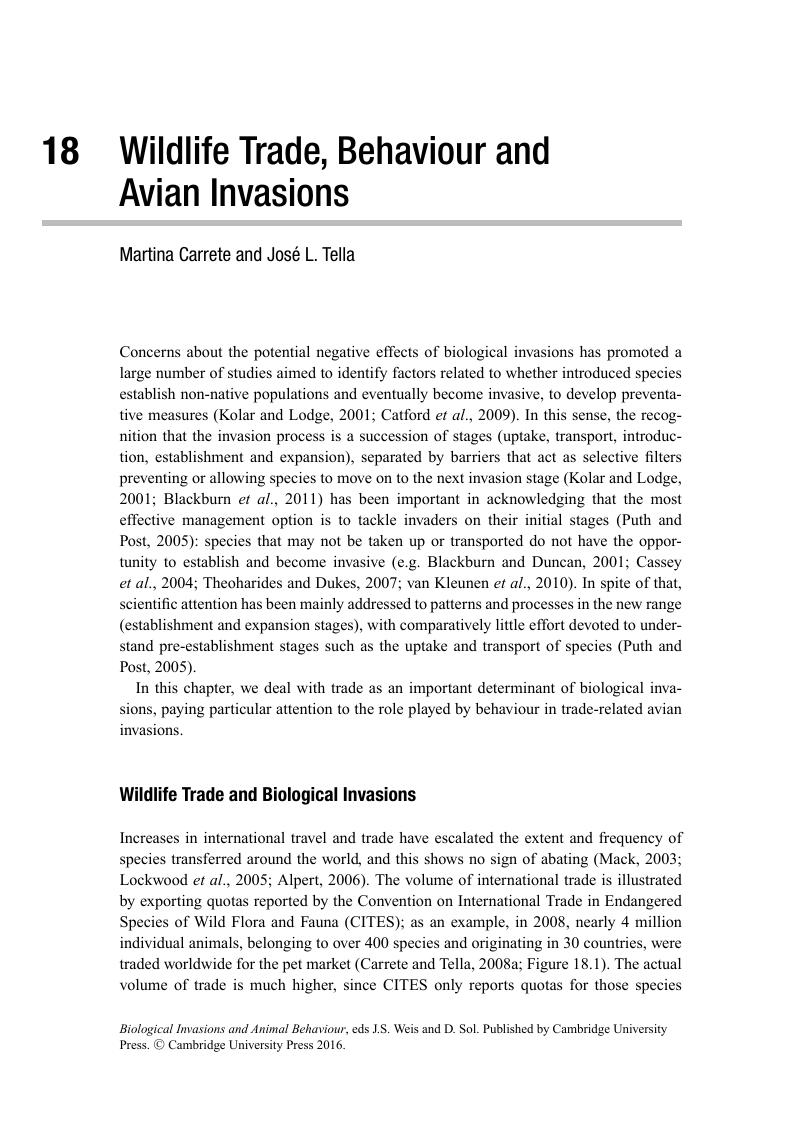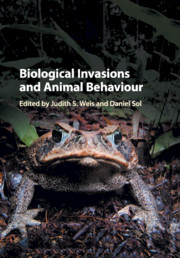Book contents
- Biological Invasions and Animal Behaviour
- Biological Invasions and Animal Behaviour
- Copyright page
- Contents
- Preface
- Contributors
- 1 Introduction
- Part I Behaviour and the Invasion Process
- Part II Behavioural Interactions Between Invaders and Native Species
- Part III Case Studies
- 13 Behaviours Mediating Ant Invasions
- 14 Invasions by Mosquitoes: The Roles of Behaviour Across the Life Cycle
- 15 How Behaviour Contributes to the Success of an Invasive Poeciliid Fish: The Trinidadian Guppy (Poecilia reticulata) as a Model Species
- 16 How Behaviour Has Helped Invasive Crayfish to Conquer Freshwater Ecosystems
- 17 Behaviours of Pacific Lionfish Facilitate Invasion of the Atlantic
- 18 Wildlife Trade, Behaviour and Avian Invasions
- Index
- References
18 - Wildlife Trade, Behaviour and Avian Invasions
from Part III - Case Studies
Published online by Cambridge University Press: 27 October 2016
- Biological Invasions and Animal Behaviour
- Biological Invasions and Animal Behaviour
- Copyright page
- Contents
- Preface
- Contributors
- 1 Introduction
- Part I Behaviour and the Invasion Process
- Part II Behavioural Interactions Between Invaders and Native Species
- Part III Case Studies
- 13 Behaviours Mediating Ant Invasions
- 14 Invasions by Mosquitoes: The Roles of Behaviour Across the Life Cycle
- 15 How Behaviour Contributes to the Success of an Invasive Poeciliid Fish: The Trinidadian Guppy (Poecilia reticulata) as a Model Species
- 16 How Behaviour Has Helped Invasive Crayfish to Conquer Freshwater Ecosystems
- 17 Behaviours of Pacific Lionfish Facilitate Invasion of the Atlantic
- 18 Wildlife Trade, Behaviour and Avian Invasions
- Index
- References
Summary

- Type
- Chapter
- Information
- Biological Invasions and Animal Behaviour , pp. 324 - 344Publisher: Cambridge University PressPrint publication year: 2016
References
- 2
- Cited by



